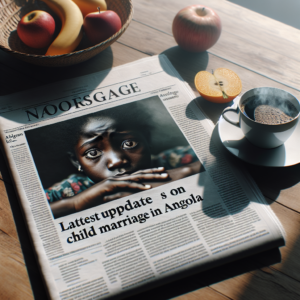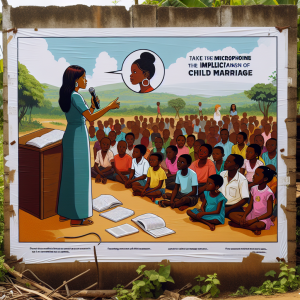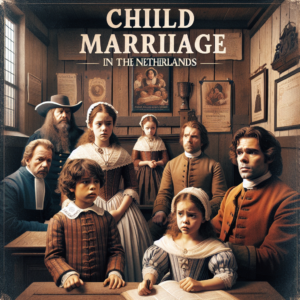### The Historical Trajectories of Child Marriage in the United Kingdom
The phenomenon of child marriage, an ancient practice wherein minors are married off often for political alliances, economic gain, or cultural traditions, has been a part of human societies across the globe for millennia. In the United Kingdom, the historical context of this practice unveils a complex tapestry woven with social norms, legal frameworks, and evolving perceptions of childhood and maturity. Though largely perceived as an issue affecting countries other than the UK, historical records reveal that the United Kingdom has its own narrative of child marriage, deeply embedded in its past.
#### Early Instances and Legal Frameworks
The history of child marriage in the UK is closely entwined with its legal history, especially regarding the laws that have regulated the age of consent and marriage. Historically, the legal age for marriage in England has shifted over time, influenced by factors ranging from religious doctrines to societal norms. During medieval times, the Church of England allowed marriages without parental consent at the ages of 14 for boys and 12 for girls, a standard which, while shocking by today’s standards, was commonplace across Europe.
This practice was not only confined to the nobility, where marriages were often arranged for alliances and inheritance matters, but also found among the common folk for whom economic considerations or social pressures might hasten or necessitate early marriages. It is worth noting that these early unions did not always result in immediate cohabitation or consummation, particularly among the upper classes, yet they underscore societal norms where childhood and adolescence were not clearly demarcated from adulthood as in contemporary understanding.
#### The Shifts in Perception and Law
The turn of the 19th century marked a pivotal moment in societal attitudes towards child marriage in the UK. The Industrial Revolution and the Victorian era brought profound changes in social norms, including concepts of family, morality, and the role of women and children in society. Advocacy for children’s rights began to take root, challenging previously held norms about child labour, education, and indeed, marriage.
One of the most significant legal shifts came with the Age of Marriage Act 1929, which raised the minimum age of marriage to 16 years for both sexes, although it still allowed marriage below that age with parental consent. This legislation marked a significant step toward recognizing the importance of childhood and adolescence as distinct and valuable stages of human development that should not be encroached upon by the responsibilities and complexities of marriage.
#### Modern Interventions and Ongoing Challenges
In recent times, the UK has continued to refine its stance on child marriage. The legal framework has been strengthened to protect minors, with further restrictions on forced marriage and clearer definitions of consent. However, the issue of child marriages has not been entirely eradicated, with cases still emerging, particularly within certain communities and among vulnerable groups. The persistence of child marriage in any form highlights the need for ongoing community education, legal enforcement, and support mechanisms to protect at-risk children.
One notable development is the public and legislative attention towards eradicating forced marriage, a practice often conflated with child marriage. The Anti-social Behavior, Crime and Policing Act 2014 made it a criminal offense to force someone to marry against their will, including minors, a move that underscores the UK’s commitment to eradicating non-consensual unions among all age groups.
#### Looking Forward
The evolution of child marriage laws and perceptions in the UK underscores a broader societal shift towards recognizing and protecting the rights and well-being of children. Legislative and societal efforts continue to aim at safeguarding minors from premature marital obligations, ensuring they have the opportunity to mature emotionally and physically before embarking on marriage.
Education and advocacy play pivotal roles in both preventing child marriage and supporting those who have been affected by it. As societies continue to evolve, the commitment to erasing this practice from the UK’s present—and not just its history—remains a paramount concern for policymakers, community leaders, and citizens alike.
### FAQs
**Q: What was the legal marriage age in medieval England?**
A: In medieval England, the Church allowed boys to marry at 14 and girls at 12 without parental consent.
**Q: When did the UK officially raise the minimum legal age for marriage to 16?**
A: The Age of Marriage Act of 1929 raised the minimum age of marriage in the UK to 16 years for both boys and girls, although marriages could still occur below that age with parental consent.
**Q: Does the UK have a problem with child marriages today?**
A: While legal reforms have significantly curtailed the practice, child marriages, often occurring under the guise of cultural or familial pressure, continue to be reported. These are now addressed more stringently under laws against forced marriage.
**Q: What does the Anti-social Behavior, Crime and Policing Act 2014 entail regarding marriage?**
A: This act made it a criminal offense to force someone, including minors, to marry against their will, reinforcing the UK’s stance against non-consensual and child marriages.
**Q: How can education help prevent child marriage?**
A: Education raises awareness about the rights and the wellbeing of children, equips them with the knowledge to resist pressure, encourages societal shifts in attitudes towards early marriage, and highlights the importance of letting children mature before taking on marital responsibilities.
The trajectory of child marriage in the UK is a potent reminder of the progress societies can make in safeguarding the rights and well-being of their youngest members. Its historical context reflects changing values and the increasing recognition of children’s rights, while modern challenges underscore the ongoing work needed to protect these rights diligently.






















